If you are after a used UTV that will deliver peppy performance and near ATV off road abilities in steep terrain, then stop reading now. After a UTV that offers potential longevity and low running costs? A Kubota RTV-X in either 21.6hp RTV-X900 or 24.8hp RTV-X1100 form could be a good call. dealer buy.
KEEPING IT BRIEF
- RTV-X1100 replaced RTV-X900 in UK
- Ex-municipal models can make a great buy
- Hydrostatic drive is not a worry but costly to fix if it does go wrong
- Modest pace. Top speed of 25mph (40km/hr) is true maximum
- Not among the quietest of diesel UTVs


Around a decade ago, we got to put the then relatively new Kubota RTV-X900 through a ‘typical’ set of livestock chores (profi 05/2015). When compared to the existing RTV-900 that it replaced, the ‘X’ variant was certainly more comfortable, thanks to moving away from a ‘cart spring’ rear axle to a new fully independent rear suspension system. In terms of all out go, however, the newer model was as steady a performer as its predecessor.
As power outputs of the RTV-900 and RTV-X900 are the same, this should have come as no surprise, but Kubota, however, did fit a different transmission to the RTV-X that we hoped would see more of that power reach the wheels. What does this have to do with buying a used RTV-X?
The more powerful RTV-X1100. This model has a 24.8hp engine for better get up and go but not top speed; 25mph is your lot with these Kubota UTVs. We suggest an X900 is fine for pottering around off road, the X1100 having noticeably more go, but neither is great on a busy road.
Good availability, but be careful
A point to note when considering any UTV as a used buy is that these machines tend to be worked hard and not get much love in return. This can mean any used UTV on offer outside a dealer network will need a thorough going over. Although you may be able to pick up some problems from a test drive, you need to check the suspension and running gear, regardless of make or model.
Before looking at key Kubota RTV-X checks, it is worth back tracking and comparing these models to the original RTV-900 launched in 2003, the RTV-X900 launched in 2014 and Its more powerful brother, the RTV-X1100. The latter was available in the US in 2014 but was not offered in the UK until 2016. The RTV-X1100 has since become the sole RTV-X in the Kubota UTV line-up (see table).
In broad outline, the RTV-900 and RTV-X900 share the ‘same’ 21.6hp, three-cylinder 898cc, Kubota D902 diesel engine but that was pretty much the only thing carried over. The X900 was otherwise all-new with developments that included:
- New chassis and ROPS system
- Independent rear suspension (IRS)
- Improved engine cooling
- Faster hydraulic tipping for the load bed
- Driveshaft CV joints in place of UJs
- Improved driveshaft and underbody protection
- 60:40 split seats on all variants
- Tilt adjustable steering wheel
- Extra storage compartments
- Same ROPS frame for all variants with easy cab upgrade
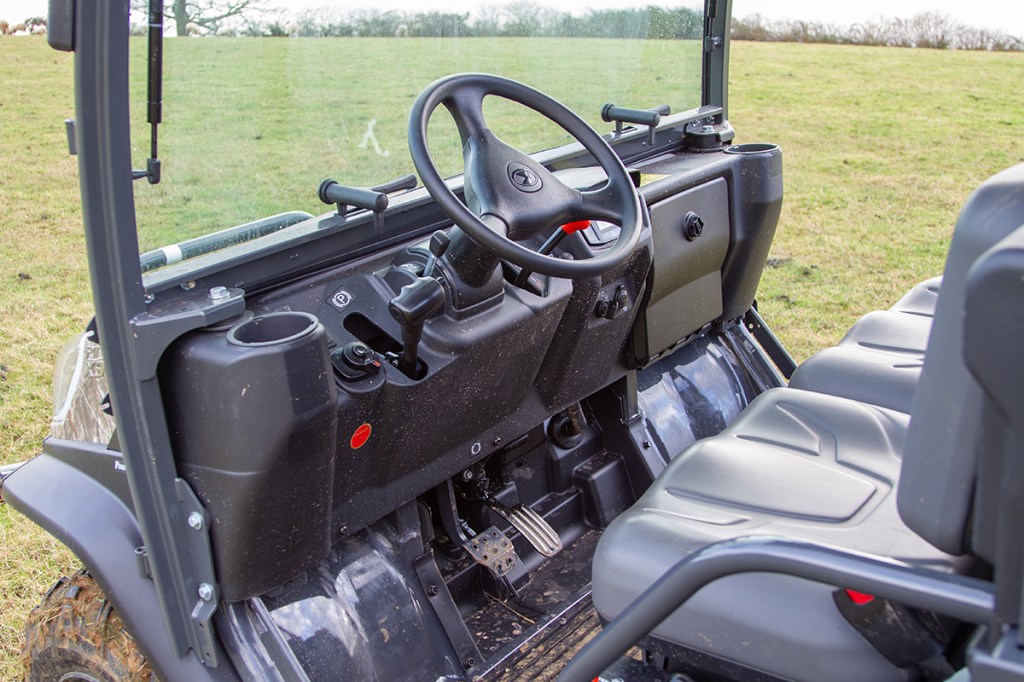
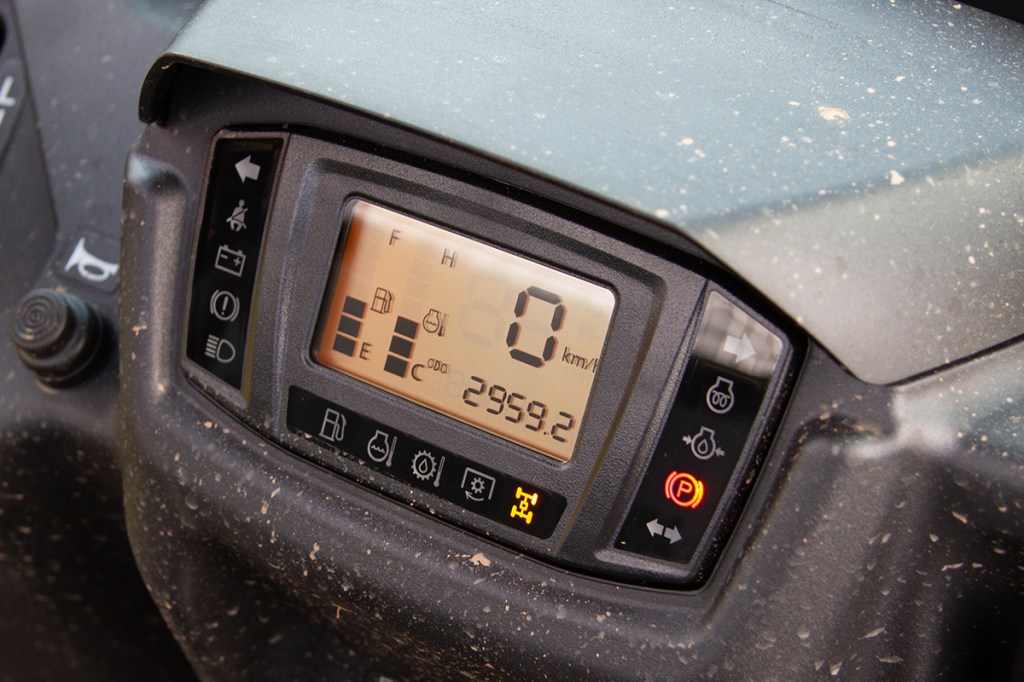
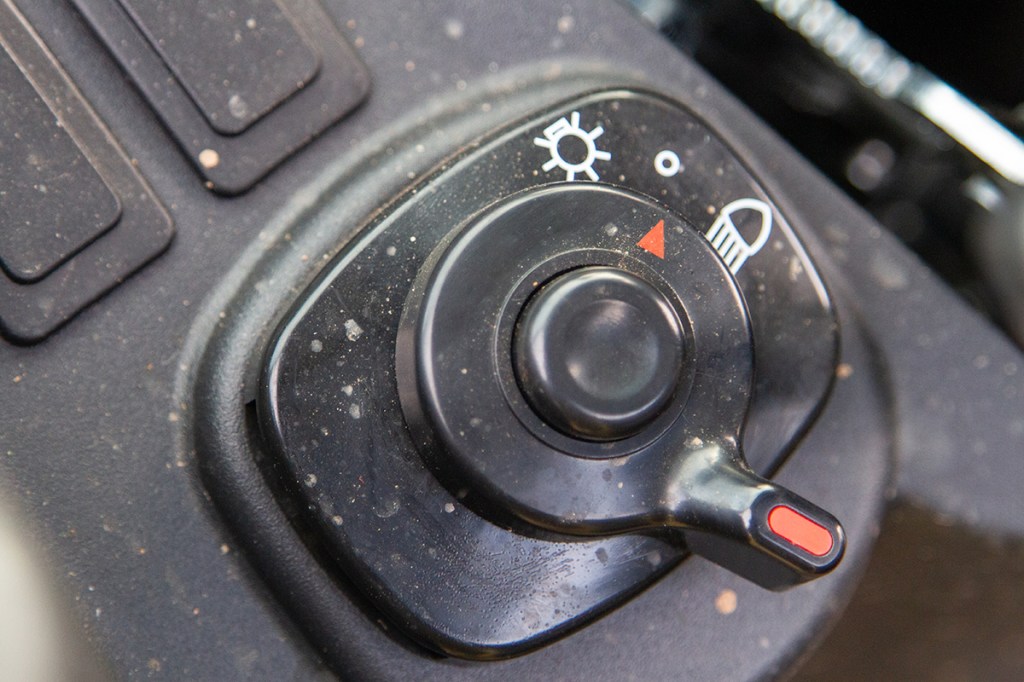
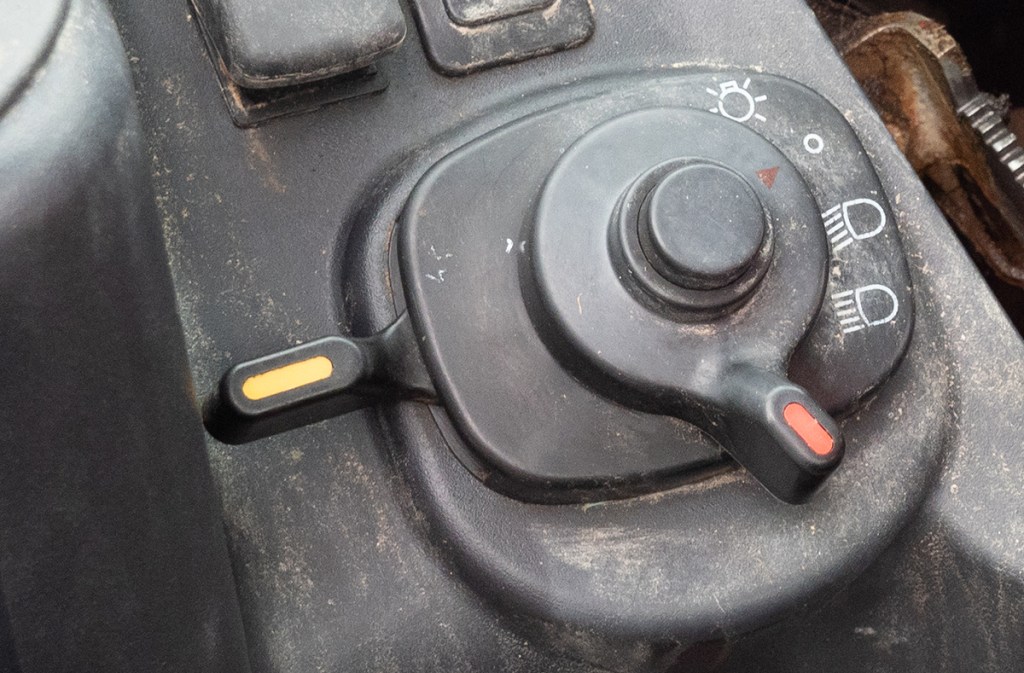
It is fair to say that although the RTV-X models have a more up to date feel and are certainly more comfortable to drive, the earlier RTV models remain tough old things (see profi 12/2012). Find a decent older RTV-900 and it can still make a sound buy. Key weak spots included the universal joint drive shafts which proved prone to wear.
Although over time Kubota added more accessible grease points to the main UJs these items have poor protection. The CV joints of the RTV-X models are much better.

Transmission wise, the dual-motor, three-range unit fitted by Kubota on the RTV was essentially taken from one of the company’s hydro compact tractors. If this transmission is run with clean oil, has been treated to OEM filters, and has not been allowed to overheat or starved of oil, it has the potential to deliver trouble free service for the life of the UTV.
The same should apply to the single-motor, dual-range hydrostatic installed in the RTV-X900, Kubota suggesting this purpose designed UTV transmission is more efficient. In use, an X900 should be more responsive than the previous RTV-900 too and be less likely to ‘bog down’ when scaling a steep slope or in deep muck. With the old model, users needed to ease off the ‘throttle’ travel pedal in tough going to reduce the output of the hydrostatic drive motors, this in turn enabling the engine to maintain enough revs to keep power flowing through the drive. Keep the pedal to the metal up a steep slope, and an RTV-900 could grind to a halt. To get going again, you would need to pull a lever in the cab to reduce excess pressure build up in the drive and then select low and try again, this time with the foot pedal not rammed hard down!


With the X900, this ‘stalling’ problem was largely resolved. Easing off the pedal a bit when scaling a steep climb can still help keep these vehicle going, a point to note if you are new to the RTV-X models. This is where the X1100 has a noticeable edge over the X900 and not just to its extra 3hp but also some detail changes made to the hydrostatic drive too.
On a test drive of either of the RTV-X models you do need to be mindful that they are not like a CVT belt-drive UTV. Even an X1100 will slow to a crawl up a long steep incline. Although less likely to completely ‘bog down’, you may want to swap to low ratio to gain any speed. You do need a degree of patience in other words. With a choice of just high and low ranges, the former may prove too tall for some moderate inclines, but low range does feel nearer a medium range as opposed to the ultra-low range of the old RTV. Low on the RTV-X is more usable in everyday running.
One of the key features of the transmission is its ability to bring a degree of engine braking downhill, often without using the brakes at all. This is important to hill users who will know how some CVT belt driven machines deliver no engine braking and rely purely on the brakes. On used belt driven machines this is really something to consider.
A note on noise. There is no such thing as a quiet diesel UTV but some are noisier than others, RTV and RTV-X models typically hovering around 83dBA. That is noisy, more so if you are in a cab with closed doors. A rear screen, as opposed to mesh guard, can help reduce some of the engine noise reaching the cab but all models are far from quiet.
What to look for – basic spec choices
With the older RTV range, the model offering was quite complex, but with the X900 matters were simplified, essentially boiling down to a choice of off-road and road-homologated variants. Both share the same Mauser ROPS frame, with a front screen and wiper plus roof listing as options. These are pretty much a default UK fit for ag use. A choice of Kubota orange or Camo finish would also be offered, the former typically coming with block pattern tyres when new, cleated alternatives as standard on Camo models.
All variants will have a separate driver seat with wider bench for the passenger. This ‘one plus two’ arrangement enables seating for three but with just lap belts for two. Full glass doors and a heater are options, the doors making an easy retrofit if needed; the opening gas struts are easy to pop off to make removing the doors simple.
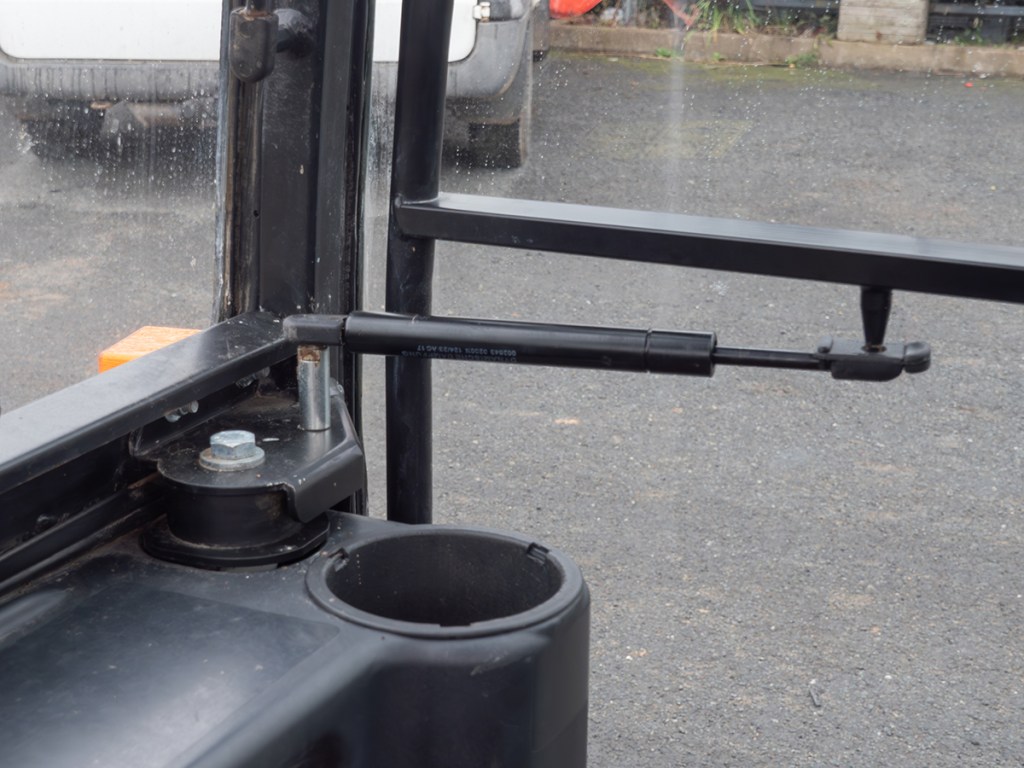
Hydraulic load platform tip is standard, as is power steering. The optional extras list is not really that extensive as the base UTV will tick most end user needs, road homologated variants only lacking an amber beacon that is not fitted as standard. The latter is a necessary piece of kit on busy roads.
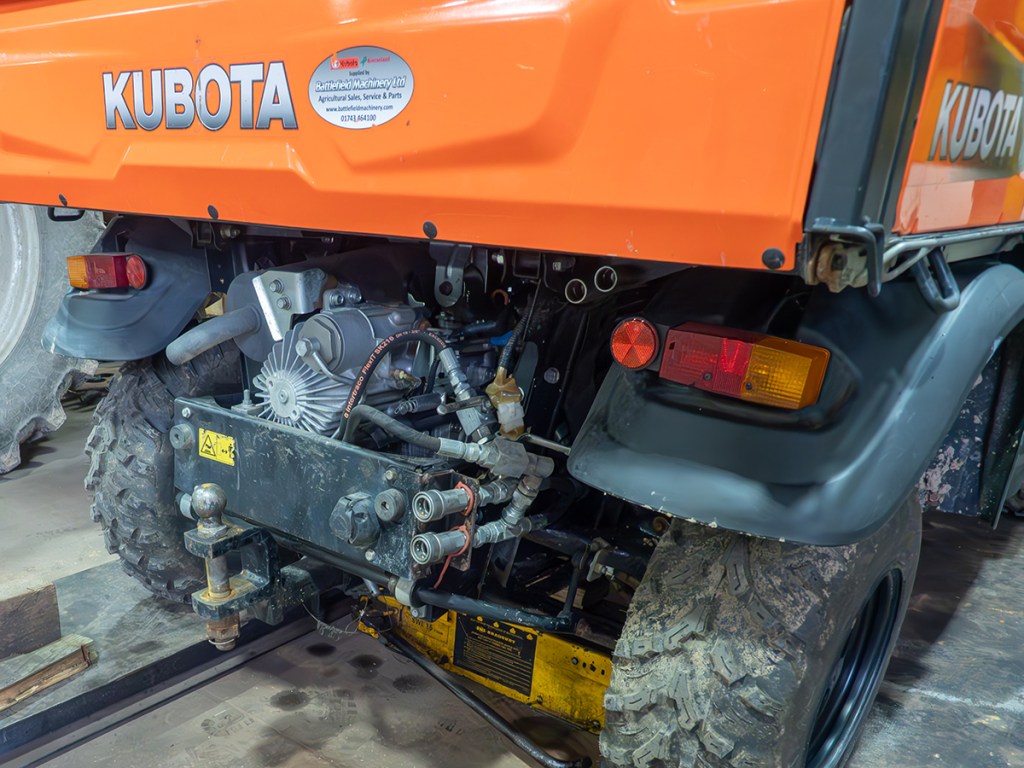

A less common option will be axillary hydraulic couplings suitable for use with a powered brush, feeder or hydraulic attachment such as an earth auger. Front couplings and hydraulics may have been specified for municipal users, these suiting a snow blade for instance. An ex-municipal model can make a good used buy as many may not have had a hard-working life.
Condition or hours first?
Some of these UTVs can rack up high hours, with used X900 models averaging 1,000 hours a year plus being far from the exception. What is critical is how service intervals have been adhered to, Kubota having recommendations that not all users would have bothered to think about. In outline, key oil and filter change recommendations are:
- Engine oil and filter: 200 hours
- Transmission oil and filters: 300 hours
In practice, these guidelines get stretched, with some models being lucky to get even an annual check. If you are buying a model from a Kubota dealer, the chances are the machines they offer will have some service history with them. A used dealer buy with 3,000 hours on the clock could be a safer buy than one with half those hours from a non-trusted source.
Which is where condition can be a help. As with any item of used equipment, you can typically tell if something has been given some care just by looking at it. Bashed bodywork, a distorted load bay, damaged lights and ripped seats are part of a three- or four-year-old UTVs lot but what if this is the case on a model with just 1,000 or so hours showing? If you are seriously looking for a used model, try and view several. A machine that looks good in the pictures can be less attractive in the metal. Be sure to get extra pictures if you are looking to travel to see a non-dealer buy. All commonsense stuff.
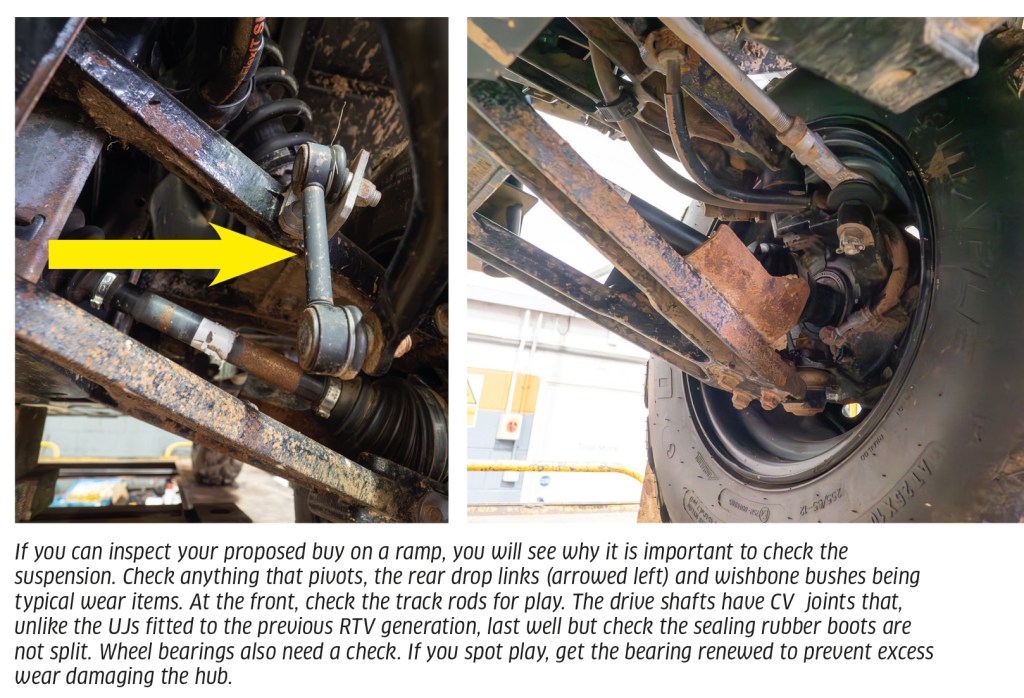
Key checks – suspension
Same old story here. If it pivots or rotates, it will wear, with the rear suspension and wheel bearings tending to need attention more than those up front. To do a proper inspection, you will need to raise the UTV up on a ramp. As this is unlikely to be possible, a simple set of checks can include putting the UTV into neutral and with someone sitting in the seat with the brake pedal pushed down to lock the wheels. Another person or two can then be asked to rock the vehicle back and forth, so you can get down to look for play in the suspension arm pivots. These bushes may be nylon or steel bush lined, and some may have grease points.
Play at any pivot suggests others may need attention too, so assume parts will need renewing if you have been unable to check them.
At the rear, the drop links that provide the link between the rear suspension and the anti-roll bar are common wear items but are easy to get at and renew. The necessary parts cost around £35 per side. Again, at the rear, take time to look over the wishbone pivots and the rear damper mounts. Also check the rear driveshaft CVs, wear being less common than it would have been for RTV models with exposed UJ universal joints. New driveshafts complete with CVs will cost more than £450.
The rear wheel bearings are packed with grease, a lack of lube plus dirt and water ingress seeing these fail. Assume they will need to be replaced on a non-dealer buy, new bearings costing around £50 per side. This job will again take around an hour.
Up front, wear is typically slower but still allow upwards of £65 per corner for suspension parts, swapping out worn components taking around an hour plus per side. The steering track rod ends need a good looking over, with uneven front tyre wear quite common due to poor tracking. This will obviously need correcting, the more so if you need to fit new tyres.
The front driveshaft CVs are well protected and can last the life of the UTV if the CV boots are in good shape. The brake discs, front and rear, typically see little wear related problems thanks to the hydrostatic drive slowing the machine as the throttle travel pedal is eased off. Problems with the brakes are more likely to stem from corrosion and a lack of use. Finally, the parking brake is often seized through lack of use too.
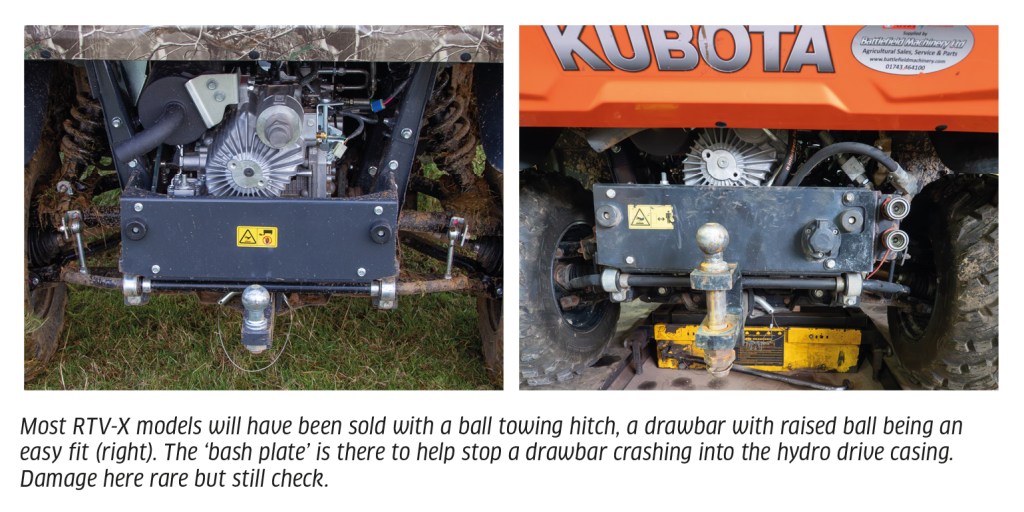
Other checks
It’s tempting to suggest the three-pot engines in all models are unlikely to give trouble, so a quick check is all you need. In practice it is worth spending some time looking for leaks from the head gasket and rocker cover, signs of overheating, ageing alternator drive belts and perished hoses.
Kubota tends to recommend the engine oil is changed every 200 hours, a short interval by modern standards but one that can see the engine run trouble free for thousands of hours. If the engine is filthy and the radiator looks clogged it suggests the UTV has been given little in the way of routine care. Look at the engine oil, wiping the dipstick onto a white rag or paper towel if possible. This will make it easier to determine if the oil is normal diesel black or old and overworked.

Transmissions on the RTV-X are not known for specific problems. The basic checks include the transmission oil level and seeing if the oil showing on the dipstick is clean. Fresh oil and filters can also help a tired transmission get its mojo back. If the transmission delivers drive, it is likely to be OK but do swap between ratios and engage reverse several times; the Bowden cables linking the selector lever to the transmission can get stiff over time, spoiling the selector’s action. These cables are easy enough to renew, with the more likely to fail lower cable run costing around £65.
EXHAUST PIPE FAILURE
On early RTV-X models, the exhaust brackets could fail, leading to the exhaust pipe to silencer connection failing. If there is a problem, you will hear it. Kubota came up with various fixes including new bracket designs and inserting a flexible pipe section to eliminate vibration damage. These repairs would work on some machines that needed attention, but exhaust problems have troubled some RTVs.
A new exhaust design is now available and this can be retrofitted to existing models. This should put an end to any future trouble. Details and costs will be available through a Kubota dealer, prices and availability not being confirmed at the time of writing.

Summary
It is misleading to follow generalisation as no two UTV users will be exactly alike, but it is fair to say a Kubota UTV with hydrostatic drive may not make the best choice for those looking for a vehicle to do longer runs on the road or tackle steep terrain with a heavy load as part of its daily routine. More accurately if that work is to be done at a decent lick. That said, these UTVs are really stable and cope with downhill sections without brakes better than most alternative UTVs.

If you are looking for a rugged, dependable and relatively cheap to run UTV for work in more benign terrain you could well find an RTV-X a great used buy. With a modicum of care, these UTVs can soldier on for thousands of hours. The trick is to work within their capabilities and to keep a set of ear defenders in the cab if you work with the doors closed!
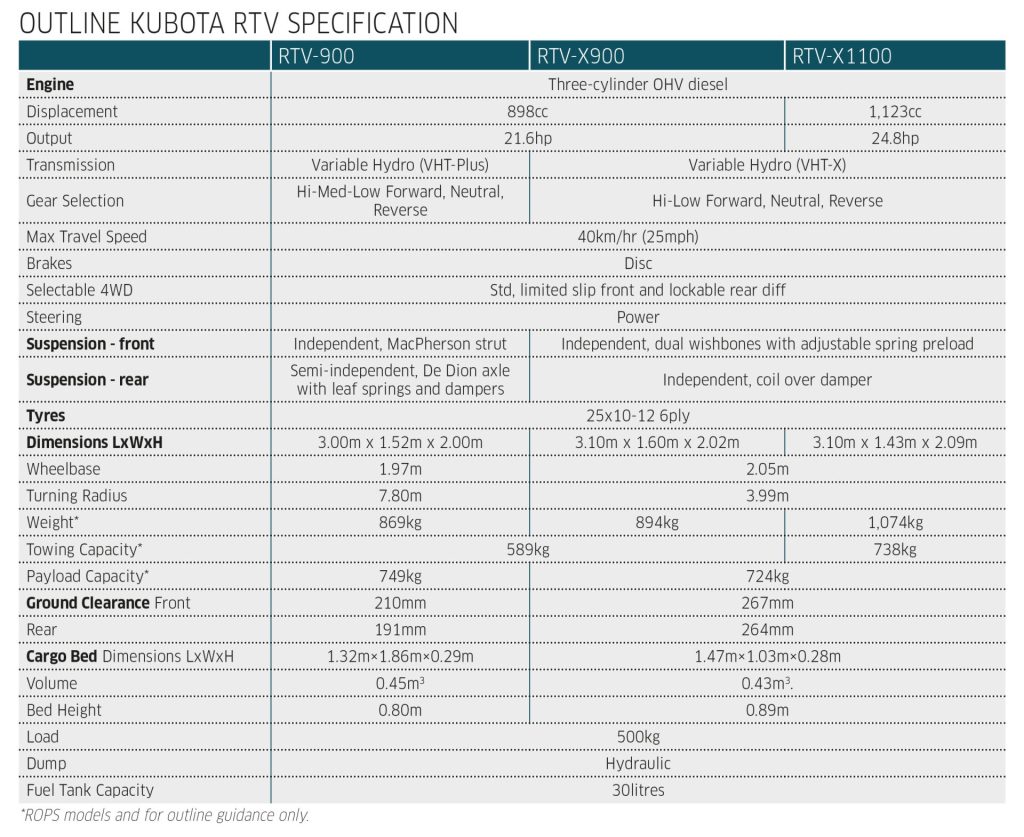
With thanks to : Richard Evans, Battlefield Machinery, Shrewsbury.
James de Havilland
For more up-to-date farming news click here and subscribe now to profi and save.






